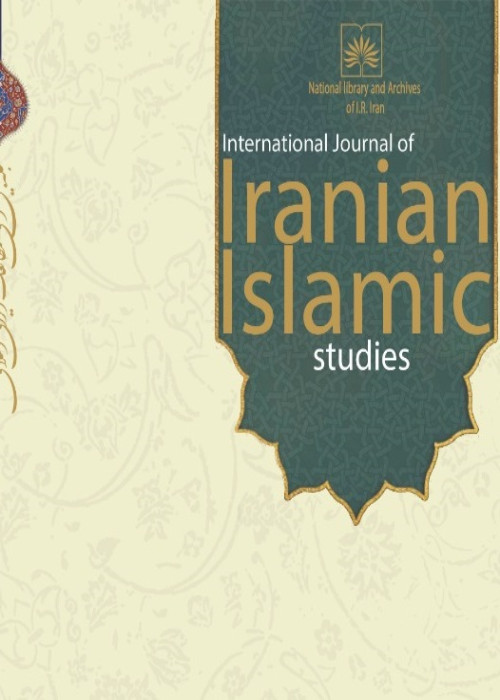Kidichi Persian Bath in Zanzibar Island
Author(s):
Article Type:
Research/Original Article (بدون رتبه معتبر)
Abstract:
One of the characteristics of Greater Iran has long been proved so far, is its great cultural dominance over the surrounding and even distant countries that have been in the sphere of cultural influence of Iran since ancient times. This powerful feature has caused the fluid and powerful culture and civilization of Iran from the far distant past to dominate some of Iran's current neighbors, which until about two hundred years ago formed parts of Iran and its results and achievements have remained stable until now. One among these powerful cultural symbols is the existence of masses of antiquities and historical monuments, in other words, the "tangible cultural heritage" of Iran, which is still seen in Iraq, Afghanistan, Pakistan, Azerbaijan, Armenia, Turkey, Syria, Bahrain, Turkmenistan, etc. Apart from these countries, which have always been and still are in the realm of Iranian civilization and cultural influence, the scope of Iranian culture has long covered countries and distant regions such as North and East Africa, in the form of tangible and intangible heritage. One of the magnificent achievements of Iran's tangible cultural heritage in Africa is the abundance of historical monuments in present-day countries of Somalia, Kenya, Tanzania (Zanzibar Archipelago), Comoros and even Mozambique - in the form of mosques, palaces, stone mansions, baths, tombs,mausoleums and ... - built by Iranians artistically and today are considered among the exquisite cultural heritage of above-mentioned countries. These monuments, which are mainly reminiscent of the migration of groups of Iranians from the Persian Gulf in the late fourth century AH and a few Iranians migrating to the coasts and islands of East Africa in the eighteenth and nineteenth centuries, although not in good condition today and some have even become half-ruined, but based on their well-structured glory and strength, still demonstrate the efforts of our ancestors, who with great effort and long stay in this region (despite the existing problems) have had dynamic and lasting effects in promoting Iranian culture and civilization. However, it is unfortunate that in scientific circles in the country, there is almost no information about these magnificent historical monuments that have been built entirely by Iranians, and this part of Iran's tangible cultural heritage has been completely abandoned inside Iran.One of the most well-known Iranian historical monuments in the East African region, which is now considered as one of the most exquisite and attractive historical buildings of the Autonomous Republic of Zanzibar, is the "Kidichi Persian Bath", which is located in a short distance from the shores of the Indian Ocean and has its own style of pure Iranian architecture; gives the glory, grandeur and strength of Iranian culture and civilization to the indigenous and international visitors. In this manuscript, relying on the available sources and some detailed field studies; This valuable historical monument has been examined as the main subject. In parallel, the author hasOne of the characteristics of Greater Iran has long been proved so far, is its great cultural dominance over the surrounding and even distant countries that have been in the sphere of cultural influence of Iran since ancient times. This powerful feature has caused the fluid and powerful culture and civilization of Iran from the far distant past to dominate some of Iran's current neighbors, which until about two hundred years ago formed parts of Iran and its results and achievements have remained stable until now. One among these powerful cultural symbols is the existence of masses of antiquities and historical monuments, in other words, the "tangible cultural heritage" of Iran, which is still seen in Iraq, Afghanistan, Pakistan, Azerbaijan, Armenia, Turkey, Syria, Bahrain, Turkmenistan, etc. Apart from these countries, which have always been and still are in the realm of Iranian civilization and cultural influence, the scope of Iranian culture has long covered countries and distant regions such as North and East Africa, in the form of tangible and intangible heritage. One of the magnificent achievements of Iran's tangible cultural heritage in Africa is the abundance of historical monuments in present-day countries of Somalia, Kenya, Tanzania (Zanzibar Archipelago), Comoros and even Mozambique - in the form of mosques, palaces, stone mansions, baths, tombs,mausoleums and ... - built by Iranians artistically and today are considered among the exquisite cultural heritage of above-mentioned countries. These monuments, which are mainly reminiscent of the migration of groups of Iranians from the Persian Gulf in the late fourth century AH and a few Iranians migrating to the coasts and islands of East Africa in the eighteenth and nineteenth centuries, although not in good condition today and some have even become half-ruined, but based on their well-structured glory and strength, still demonstrate the efforts of our ancestors, who with great effort and long stay in this region (despite the existing problems) have had dynamic and lasting effects in promoting Iranian culture and civilization. However, it is unfortunate that in scientific circles in the country, there is almost no information about these magnificent historical monuments that have been built entirely by Iranians, and this part of Iran's tangible cultural heritage has been completely abandoned inside Iran.One of the most well-known Iranian historical monuments in the East African region, which is now considered as one of the most exquisite and attractive historical buildings of the Autonomous Republic of Zanzibar, is the "Kidichi Persian Bath", which is located in a short distance from the shores of the Indian Ocean and has its own style of pure Iranian architecture; gives the glory, grandeur and strength of Iranian culture and civilization to the indigenous and international visitors. In this manuscript, relying on the available sources and some detailed field studies; This valuable historical monument has been examined as the main subject. In parallel, the author has tried to answer the main question that what was the motive and purpose of the construction of this building in a detailed and reasoned manner. The research method of this article is based on library studies as well as description and analysis approaches. It is worth mentioning that despite the severe lack of available resources, the author has tried hard to provide pristine and first-hand information about this unique monument located in the coasts of Zanzibar Archipelago. At the same time, as already mentioned, an important part of the available information is the result of the author's objective observations and field studies works in Tanzania (Zanzibar Archipelago). In connection with the background of this discussion, it is important to know that so far no independent research has been done about this historical Iranian bath inside and outside the country. Therefore, by collecting available scattered information and conducting some field studies works, the researcher has endeavored to draw a comprehensive picture of this Iranian site and provide valuable information about it's precious and valuable historical significance to domestic and international researchers and scholars.Although the author does not claim to be innovative about this manuscript, but once again it is emphasized that the studying and scrutinizing of Iranian architectural historical monuments in Tanzania (Zanzibar Archipelago) which have remained standing for a number of centuries and have been neglected by Iranians, are too important and have to be introduce properly.
Keywords:
Language:
Persian
Published:
Journal of Iranian Islamic Studies, Volume:12 Issue: 1, 2022
Pages:
119 to 148
magiran.com/p2495032
دانلود و مطالعه متن این مقاله با یکی از روشهای زیر امکان پذیر است:
اشتراک شخصی
با عضویت و پرداخت آنلاین حق اشتراک یکساله به مبلغ 1,390,000ريال میتوانید 70 عنوان مطلب دانلود کنید!
اشتراک سازمانی
به کتابخانه دانشگاه یا محل کار خود پیشنهاد کنید تا اشتراک سازمانی این پایگاه را برای دسترسی نامحدود همه کاربران به متن مطالب تهیه نمایند!
توجه!
- حق عضویت دریافتی صرف حمایت از نشریات عضو و نگهداری، تکمیل و توسعه مگیران میشود.
- پرداخت حق اشتراک و دانلود مقالات اجازه بازنشر آن در سایر رسانههای چاپی و دیجیتال را به کاربر نمیدهد.
In order to view content subscription is required
Personal subscription
Subscribe magiran.com for 70 € euros via PayPal and download 70 articles during a year.
Organization subscription
Please contact us to subscribe your university or library for unlimited access!



